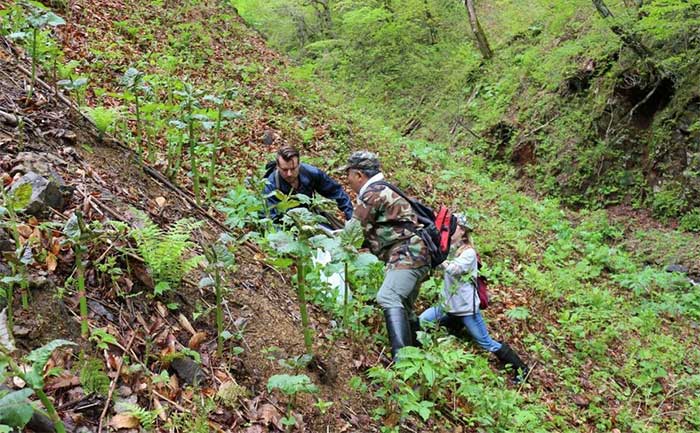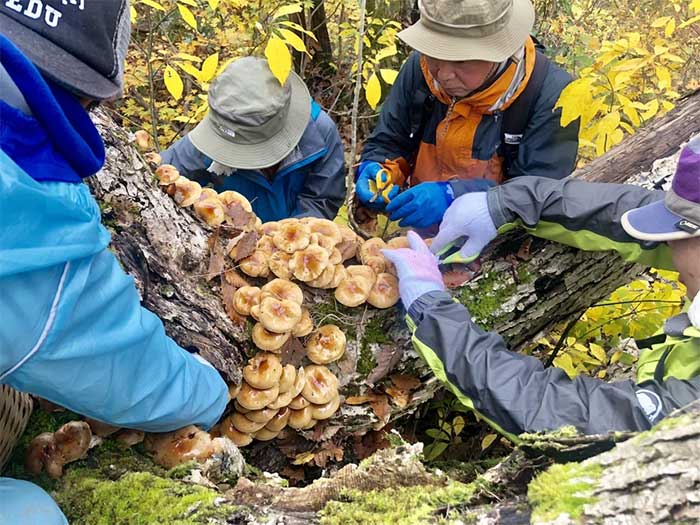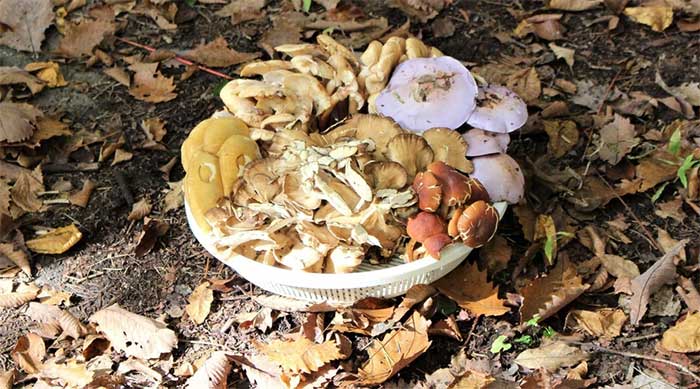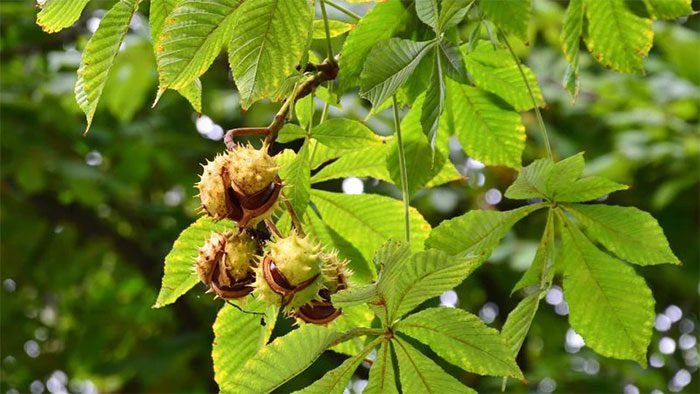Foraging for Natural Foods: A Unique and Rewarding Way to Experience Japanese Culture.
The natural landscapes of Japan are undeniably beautiful and vibrant. But did you know that you can forage for a delicious meal straight from these stunning environments?
From lush forests and towering mountains to expansive coastlines and rice fields, all are excellent places to search for edible plants such as bamboo shoots, ferns, wild mushrooms, and seaweed.

Foraging for food is a cultural experience worth trying in Japan.
Many sources suggest that the Japanese have been foraging for food in some form since the Neolithic period, around 10,000 BCE. During the Jomon civilization, their diet consisted of approximately 30% horse chestnuts gathered from the wild. Today, the most commonly foraged plants in Japan include various types of sansai (mountain vegetables), seaweed, and mushrooms.
During the Heian period (794 – 1185), foraging for sansai was considered a noble activity often undertaken by nobility during rural gatherings. By the Edo period (1603 – 1867), the abundance of sansai helped many people escape starvation.
In general, sansai tends to have a very bitter taste, which can be challenging for those unaccustomed to such flavors. One of the most popular ways to use sansai is to enhance the flavor of soba (buckwheat noodles).

A group of men foraging mushrooms from a tree trunk.
Foraging largely depends on the seasons, with each time of year bringing its own variety of plants and herbs. For example, bamboo shoots in spring, berries in summer, and mushrooms in autumn. Overall, foraging is a great way to connect with the changing seasons throughout the year.
For those familiar with foraging, adapting to weather changes can be relatively easy. However, beginners should be aware of several essential items to bring before heading out.
First, you’ll need a box to collect your foraged foods, as well as a knife or scissors for easy harvesting. Additionally, don’t forget to bring other supplies such as gloves, snacks, water, and a whistle for emergencies.
Moreover, anyone without experience should consider going with a local guide. Foraging varies greatly by location, and misidentifying or consuming the wrong plant can have serious health consequences, including death. Below are some common plants found in Japan’s natural environment and their uses.

Edible mushrooms found in nature.
1. Japanese Horse Chestnut
Horse chestnuts (tochi no ki) have played an important role in Japan’s development history. The high caloric content of these nuts helped alleviate hunger during the Edo period.
With their ability to thrive in both urban and rural areas, two popular recipes using this plant are deep-fried or cooked in miso soup.

Japanese horse chestnut.
2. Mugwort
Mugwort (yomogi) can be found throughout Japan, from mountainous regions to fields. This resilient plant can thrive anywhere that receives sunlight. Its leaves are typically slender and have a distinctive aroma.
In the past, mugwort was often used for medicinal purposes, such as aiding digestion and boosting energy. Today, it is also used in traditional sweets, such as mochi.
3. Wild Radish
Wild radish (hama-daikon) is commonly found on beaches or along riverbanks in early spring. This plant is easily recognizable by its clusters of white and purple flowers atop a long stem. A popular method for preparing wild radish is to soak it in salt to remove bitterness, then fry it crisp.


















































